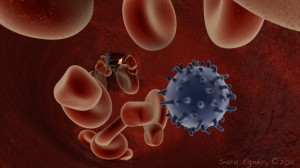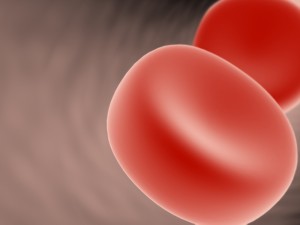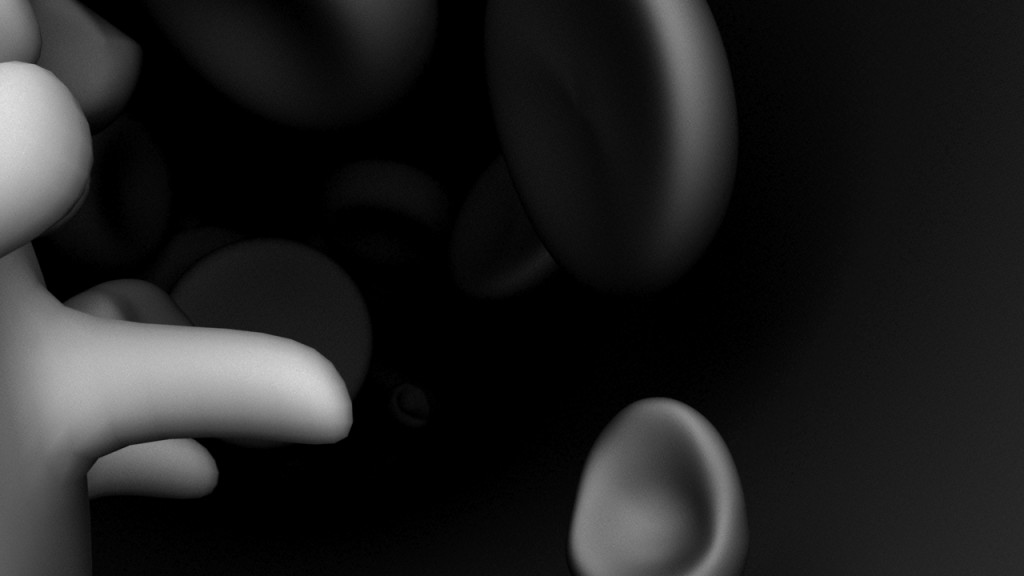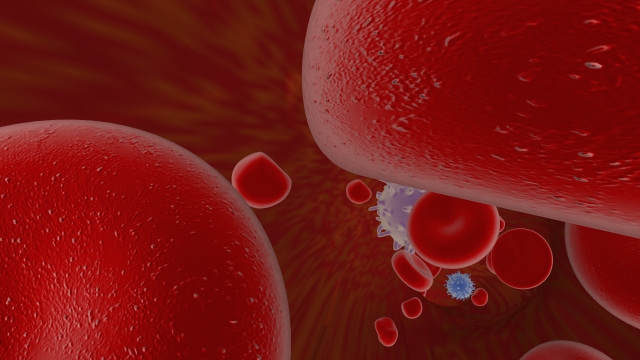Archive for the ‘blood’ tag
Giving Blood
Today I spoke with a woman about blood supply shortages. And I just thought that it was worth reminding people that the summer months tend to see a drop in the over all blood supply. Local blood banks would be happy to receive donations from fine folks like you. So if you’re the type to go and do that sort of thing, here’s your nudge to make the trip this month.
If you’re in Chicago like me, LifeSource would be happy to see you. And Heartland has several locations throughout Illinois. The Red Cross also accepts blood donations and has centers nationwide.
Because blood has a limited shelf life, it is ideal for people to donate throughout the year to keep supplies strong.
Blood Vessel Fly Through
I’ve mentioned here before that I’ve been working on this blood vessel fly through animation for my first animation in Maya. Well, just last week, I got my render passes and started compositing them in After Effects. Really, this just amounted to using a standard beauty pass, and a luminance depth pass.
If you’re new to 3D animation, a beauty pass, or it may also be called your master layer, is the basic image you’re rendering out of your scene. For instance, this is frame #38 from that pass…
A luminance depth pass on the other hand, is a black and white gradation representing the distance of objects in your scene to the camera. In 3DsMax this is called a z-depth pass. But in Maya, it’s best to use a luminance depth pass (yet another of the subtle differences between the two programs). My luminance depth pass for frame #38 looks like this…
Using the program After Effects, you can place a luminance depth layer in your timeline. Hide it, because it’s not that interesting to look at in and of itself. And then create an adjustment layer and apply a blur effect. In my case I chose the lens blur, but I understand that there are different ways of going about this. Once you are in your lens blur settings you can point that layer at your hidden layer, and it will use the black and white gradient as a guide or mask to set the blur according to the distance of objects. You’ll have to play with your settings a bit to get it right, but I’m happy with the subtle blur I got in the background of my animation in the end.
I had also intended to use an ambient occlusion pass, but mine came out too dark to make use of it. Again, if you are unfamiliar with this idea, the principle is that your render produces images based on the proximity of objects to the camera and each other. The image is darkest where things are in close proximity and lightest where they are not. They are also lighter when they are closer to the camera and fade off into the background as they get further away. Here is my frame #38 again to better illustrate the idea…
Because my scene is so dense and crowded, much of my ambient occlusion pass just came out black, so I wound up not using it at all. If I had, I would have placed it as a layer in After Effects, turned down the opacity, and set the blend mode to multiply so that the shadows would come through just lightly over the scene.
I also put a quick title card at the beginning of the clip and then exported the whole thing as a quicktime movie. This allowed me to bring it all in to my editing software (Final Cut Pro). There I made a few final tweaks, and added sound.
And here is the end result, hosted on Vimeo. I’ve also got it up on YouTube, so feel free to take a look there if Vimeo isn’t working for any reason.
Blood Vessel Fly Through from sara egner on Vimeo.
So yeah, pretty neat! And it feels great to have the big project for my Maya class taken care of so I can focus on my other work this last couple weeks of the fall semester.
Through a Blood Vessel
Last week I finally managed to export a playblast from Maya of my blood vessel project. It’s nothing too impressive at this stage, but I’m liking the roller coaster ride feeling of it…
Here are a few stills to give you a better idea of what the final render will look like…
I recently decided to end the ride with the blood cells being pulled off course up into a blood clot. Seemed like a fitting end to the journey. But I’m currently having some difficulty with rendering images that use a jpeg in the color channel. I’m still not certain if this is a matter of my laptop’s capabillity or some limitation of the Maya Hardware renderer which has allowed me to do some other tricks with my textures that I really don’t want to give up. Anyway, here is a screen shot of that final clot area as it stands now.
I still need to model some fibrin in there to really say blood clot, but the rendering difficulties have made it very difficult to do anything lately. I’m trying to change up the texture of the vessel walls themselves as well. Fingers crossed for awesome results!
Blood Flow Out Into The Arm
Blood gets pumped from the left ventricle, out into the aorta, where it goes either into the brachiocephalic trunk to get to the subclavian artery if it’s going to the right limb, or directly into the subclavian artery if it’s going to the left limb.
From the subclavian artery there is a branch to the vertebral artery, the internal thoracic artery, and the thyrocervical trunk, which has several branches including the suprascapular artery (which gets seen in an axillary dissection at the point where it courses under the suprascapular ligament and goes through the suprascapular notch) and also the transverse cervical artery (which supplies trapezius with it’s superficial branch, and if it splits into a deep branch supplies latissimus dorsi, levalor scapulae, the rhomboids, and more of trapezius).
Then costocervical trunk comes off of what is known as the second part of the subclavian artery. It branches into a Deep cervical artery, and a supreme intercostal artery.
The third part of the subclavian artery usually has no branches. But in people who’s transverse cervical arteries don’t split into a superficial and deep branch, you will find the replacement for that deep branch here. In which case it will be called the dorsal scapular artery and do all the things described above as the deep branch of the transverse cervical artery.
Then once you’ve passed by the first rib, the subclavian artery becomes known as the axillary artery. There is a popular mnemonic for this part, and it goes Suzi Taylor likes pot and sex (or sex and pot, those last few don’t always line up just perfectly). So that all goes…
Suzi – Superior (or Supreme) thoracic artery, which supplies the upper thoracic wall
Taylor – Thoracoacromial artery, which branches into an acromial, clavicular, deltoid, and two pectoral branches (you can spot it ‘cuz it looks like a little tuft of arteries bursting out there)
Likes – Lateral thoracic artery, which supplies the lateral thoracic wall
Pot – Posterior circumflex humeral artery (which then travels with the axillary nerve through the quadrangular space – I like to think of Ax smoking pot while he goes through a square environment)
And – Anterior circumflex humeral artery (which is smaller that the posterior one)
Sex – Subscapular artery, which immediately divides into the circumflex scapular artery and thoracodorsal artery. I’ve labeled this one lastly here, mostly to match the drawing above, but it often comes out before the humeral ones. you’ll know it by being the one in that last bundle before getting to Teres Minor where there is an immediate branch, and also because it will come off medially toward the scapula as opposed to the circumflex humeral arteries which both go wrapping around the humerus.
After the border of Teres Minor, the major artery becomes known as the brachial artery. I haven’t drawn that part here, but it will give off the profunda brachii, superior and posterior collateral arteries, and then break into a radial artery and an ulnar artery somewhere around the cubital fossa.








